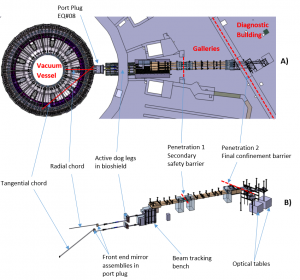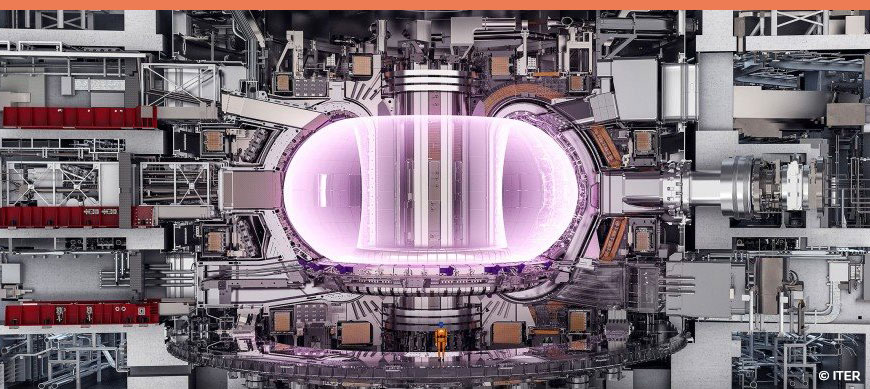In 2019, Bertin Technologies was awarded a contract by ITER Organization for the preliminary design of the Density Interferometer Polarimeter DIP, a complex optical system for real-time measurement of plasma density in the Tokamak. Mission accomplished: after delivering DIP’s preliminary design in 2020, our teams have just provided its final design. More information on this project.
The Density Interferometer Polarimeter is one of the future diagnostic of ITER reactor (also called Tokamak), the world’s largest experimental fusion facility designed to demonstrate the scientific and technological feasibility of fusion energy.
The role of the DIP is be to contribute to the plasma control, by measuring the electron density inside the Tokamak to ensure a good stability to get a high fusion energy efficiency. Indeed, the plasma must be properly controlled so that the fusion reaction can last over time and increase the energy production gain.. The DIP plasma diagnostic is a dispersion interferometer based on the following principle: a continuous 40W laser at 10µm wavelength passes through a 24mm-long OpGaAs crystal to generate a second laser of 5µm. The two lasers with different wavelengths will propagate through 50 meters before entering the Tokamak’s enclosure containing the plasma. Once in the Tokamak, the lasers will be reflected on a reflector maitnening a target position at 0.5mm and return to their source to cross a second OpGaAs crystal. By crossing this second crystal, the 10µm laser generates a second 5µm laser which will interfere with the first 5µm laser. Measuring the intensity of this signal allow to know the slight phase shift of the two laser induced in the plasma which is proportional to the plasma density. To guarantee the alignment, a control loop system operating in a radioactive environment is required.
The key component of DIP is the OPGA AS crystal, which allows a powerful laser beam to be doubled in frequency without breaking it. As part of the qualification of DIP final design, Bertin has successfully generating a 5µm laser by injecting a 40-Watt laser at 10µm: this is a rare performance as very few laboratories already did such a test. The DIP plasma diagnostic will thus be of interest to all Tokamak operators.


To carry out this project, a team of 8 people worked on DIP preliminary design for more than a year and a half, with the conceptual design provided by the ITER Organization. The objective was to study the concept, raise issues and provide solutions. Bertin’s experts then refined the design plans for delivery of DIP final design in Autumn 2022. Next step will be to set up a test bench to validate the performance of the DIP interferometer in our Aix-en-Provence facility.
The complexity of the DIP Density Interferometer Polarimeter fully demonstrates the expertise of Bertin’s teams in the field of plasma diagnostic, as well as their optical know-how, which is well suited to large-scale projects. Optics, the core technology of DIP, is one of the sectors of excellence of Bertin Technologies, French leader in industrial innovation. With the experience gained with the Laser Megajoule program, Bertin has positioned itself since 2009 on the market for advanced instrumentation for the analysis of fusion plasma. Indeed, Bertin contributes to the conduct and safety of ITER experiments, but also to the acquisition of data that will be used by physicists around the world. In the years to come, Bertin Technologies thus aims to take on other complete diagnostic projects for ITER, from design to on-site installation.

